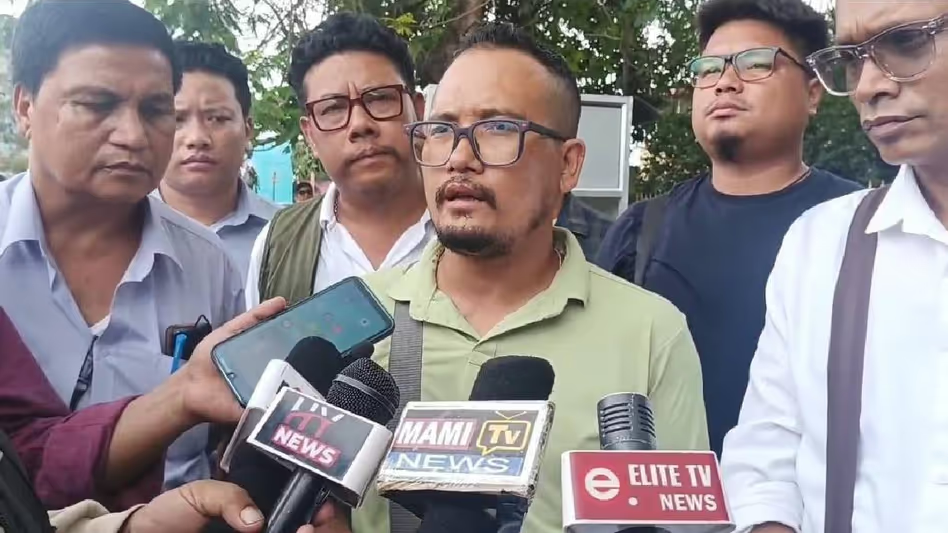Understanding the Churachandpur IDPs Case: A Deep Dive into Governor’s Three‑Day Assurance
Summary of the News Article
A delegation from the Churachandpur Meitei United Committee (CMUC), representing internally displaced Meitei families, met Manipur Governor Ajay Kumar Bhalla on July 3, 2025, to press six long-pending demands submitted on March 13 and April 21. The Governor acknowledged their grievances—ranging from educational support and camp management to resettlement, documentation, livelihoods, and temporary housing—and assured that select demands would be addressed within three days, with expedited communication to relevant authorities. CMUC leaders affirmed they’d monitor progress and escalate agitation if promises go unfulfilled
1. Why This Matters: A Human Story Behind the Headlines
Picture families forced into relief camps—kids missing school, parents with no means to support them, their future hanging in limbo. That’s the harsh reality for the hundreds of displaced Meitei families from Churachandpur. Their pleas echo through corridors of power, and now, they’ve got a promise: action within three days. But what does that really mean? And why is this so crucial right now?
2. Setting the Scene: The Displacement Background
In the aftermath of the May 2023 ethnic violence in Manipur, over 60,000 people were displaced, many from Meitei-dominated neighbourhoods now under pressure in Churachandpur The violence, triggered by tribal–non‑tribal tensions and ST-status demands, threw lives off balance. Two years later, many families still live in makeshift relief camps—waiting for basic services, education for their children, and a route back home.
3. CMUC’s Six‑Point Demand Sheet: What They’re Asking For
Here’s a snapshot of their pressing demands
- Educational Support for IDP Students
– Special packages or stipends ensuring disrupted learning resumes. - IDP-Led Relief Camp Management
– Self-governance to manage camp resources and concerns transparently. - Simplified Documentation Access
– Streamlined birth, domicile, and ID certificate issuance to legitimize displaced lives. - Organised Resettlement
– Safe return mechanisms to ancestral villages, planned and structured. - Livelihood Provisions
– Employment schemes (preferably government jobs) tailored to skills of displaced individuals. - Temporary Housing Facilities
– Interim homes at sites like Phougakchao Ikhai in Bishnupur until permanent rehabilitation happens.
4. Governor’s Assurance: What He Promised
On July 3, CMUC leaders presented the same demands to Governor Bhalla. Reportedly, he:
- Recognized the urgency and gravity of these demands.
- Promised that select demands would be “addressed within three days.”
- Committed to fast-tracking communication between state agencies and CMUC.
But he also indicated continued need for monitoring—and CMUC vowed to intensify protests if tangible actions weren’t seen
5. Why the Three‑Day Timeline? What It Means Practically
Three days isn’t random—it’s a tactical move by CMUC:
- It signals urgency and a demand for concrete results.
- The Directorate and district officials will start drafting orders, budget allocations, and program outlines immediately.
- Administrative machinery must shift from promise to planning—fast.
- It provides a checkpoint—if by July 6 there’s no visible progress, CMUC plans to escalate.
In short: it’s a deadline with teeth.
6. Where This Fits in the Broader Context
This isn’t an isolated plea—it ties into broader developments:
- The SC-supervised rehabilitation and ongoing camp improvements led by central teams, including Home Secretary Govind Mohan, who just visited Churachandpur camps in early June
- Supreme Court oversight into FIRs from the 2023 violence—highlighting the state’s responsibility
- Political pressure from CSOs, MHA dialogues, and renewed efforts to secure the state’s territorial integrity—with IDP resettlement a key condition
7. The Emotional and Social Toll on IDPs
Imagine:
- Children who’ve missed years of school.
- Parents without official addresses to apply for jobs.
- Women struggling to keep families together in cramped camps.
Temporary schooling, offices in nearby towns, volunteer-run kitchens—these are band-aids. The real fix is giving them dignity through homes, livelihoods, and self-belief. That’s the muscle behind CMUC’s demands.
8. What CMUC Will Likely Monitor in 3 Days
They will watch for:
- Education: Confirmation of funds or schemes, meetings with school officials.
- Camp Self‑Governance: Circular to redesign camp committees.
- Documentation: Fast‑track teams from DC offices initiating certificate issuance.
- Resettlement Plan: Site surveys, land allotment markers, district action orders.
- Livelihood/Pilot Schemes: Rollout plans, lists of IDP beneficiaries.
- Temporary Housing: Boundary demarcations, contractor meetings for prefabs.
A flurry of memos, notices, and directives—preferably with stamped signatures.
Frequently Asked Questions (FAQs)
Q1: Who are the Churachandpur IDPs and why are they displaced?
They are mainly Meitei families displaced by the May 2023 ethnic violence. Many fled to hill areas like Churachandpur, living in official relief camps since then
Q2: What are the six demands made by CMUC?
They include educational aid, self-managed camps, simplified IDs, resettlement, livelihood provisions, and temporary housing in Bishnupur/Phougakchao Ikhai
Q3: What has the Governor committed to?
Governor Bhalla assured a three-day timeline, promising select demands would be acted upon swiftly and communicated across departments
Q4: What happens if the demands aren’t met in three days?
CMUC has warned of escalated protests—including sit-ins and agitations in relief camps if deliverables aren’t seen by July 6 .
Q5: How does this fit into the larger Manipur peace process?
This sits alongside central visits (June Home Secretary), Supreme Court oversight, ongoing rehabilitation, and emotional-political healing. Resettlement is a foundational step toward restoring stability .


